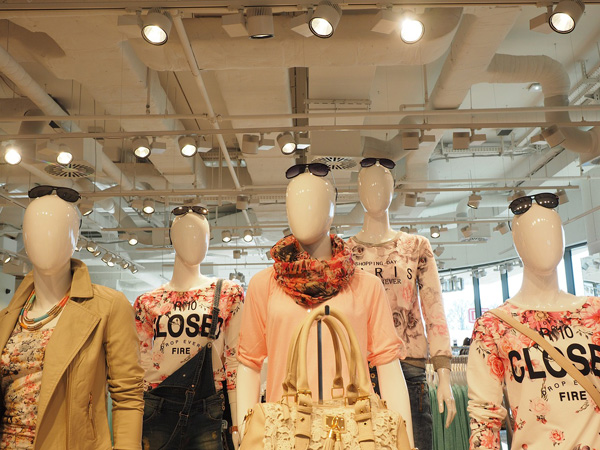Fashion industry embraces greater responsibility for animal rights and sustainability

[A photograph of mannequins in a clothing store. Photo Credit to Pixabay]
Fashion designer Stella McCartney has taken the spotlight for teaming up with PETA (People for the Ethical Treatment of Animals) to stop using real animal leather and feathers in their products.
The campaign highlights the harsh reality of the feather-collecting process for padded jackets, which causes severe pain and suffering for animals like ducks and geese.
McCartney revealed that 1.5 billion birds die from feathers each year, highlighting the ethical concerns surrounding the fashion industry’s production practices.
PETA also describes how these birds go through inhumane treatment as they have to endure brutal plucking while their legs are tied together, resulting in torn and bleeding skin.
This painful procedure begins when birds are as young as 10 weeks old and continues every six weeks until death.
Therefore, McCartney’s campaign seeks to raise global awareness of this harsh reality and encourage the fashion industry to adopt more humane practices.
Her efforts coincide with a growing movement in the fashion industry to eliminate feathers from clothing and accessories.
Victoria’s Secret, an American women’s lingerie brand, has pledged to stop using the 620,000 feathers from bird species such as chickens, pheasants, and ostriches that once adorned each of their fashion shows, opting instead for artificial feathers.
In early 2024, Copenhagen Fashion Week, a major fashion authority in Denmark, has banned all designers who incorporate real feathers in their collections.
This shift reflects a broader commitment within the industry to embrace cruelty-free practices and protect animal welfare.
Beyond bird feathers, there is a growing demand for fashion that avoids all animal-derived materials, including leather, fur, and wool, in favor of cruelty-free alternatives.
"Cruelty-free" refers to products and services created without animal testing or animal-based ingredients, with vegan fashion and vegan beauty leading the way.
However, misconceptions about vegan fashion can sometimes lead to environmental issues.
For instance, many synthetic materials marketed as “vegan leather” are made from plastic, which can contribute to environmental pollution despite being animal-friendly.
This highlights the need for balance in vegan fashion, ensuring that animal-free materials are also eco-friendly.
To address these challenges, innovative alternatives are emerging that utilize plant-based and upcycled materials for more sustainable vegan leather options.
For example, in the Philippines, innovators have developed Piñatex, a vegetable-based leather produced from pineapple stems and leaves that would otherwise be discarded, which is now being used in products like shoes and electric vehicle seats.
Meanwhile, in South Korea, manufacturers are creating leather made from traditional Korean paper, known as "Hanji”, which combines mulberry bark with natural fibers, offering unique embroidery and printing, and featuring deodorizing properties due to its odor-absorbing nature.
Fashion today is increasingly recognized as more than just trends—it’s seen as a platform for social responsibility.
The industry’s evolving stance is calling for fashion that respects nature, with a strong push to eliminate the use of feathers and other animal-based materials across all designers.
Brands are encouraged to avoid using materials that harm animals and the environment, reflecting a commitment to ethical production.
Consumers are increasingly taking a key role by practicing smart, ethical choices and supporting brands that align with these values.
Together, ethical manufacturing and mindful consumption pave the way for a more responsible, sustainable future in fashion.

- Rena Park / Grade 11
- Chadwick International School

![THE HERALD STUDENT REPORTERS [US]](/assets/images/logo_student_us.png)
![THE HERALD STUDENT REPORTERS [Canada]](/assets/images/logo_student_ca.png)
